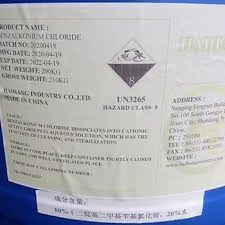difference between flocculant and coagulant
Understanding the Differences Between Flocculants and Coagulants
In the field of water treatment, flocculants and coagulants play crucial roles in the purification processes. While the terms are often used interchangeably by those unfamiliar with the nuances of water treatment chemistry, they denote distinct substances with specific functions and mechanisms of action. Understanding the differences between these two types of agents can significantly enhance their effective application in various processes, including wastewater treatment and drinking water purification.
Coagulants The First Step in Water Treatment
Coagulants are chemical agents that promote the aggregation of small particles suspended in water. These suspended particles, which may include dirt, silt, and microorganisms, often carry a negative charge that keeps them separate. Coagulants work by neutralizing this charge, allowing particles to come closer together. Common coagulants include aluminum sulfate (alum) and ferric chloride. Once added to water, coagulants destabilize the colloidal particles, leading to their initial clumping or coagulation.
This process typically requires careful pH balancing and is influenced by water chemistry, as the effectiveness of coagulants varies with different types of water. Coagulation creates larger aggregates, known as flocs, which are easier to separate from water.
Flocculants Enhancing Particle Removal
Following coagulation, flocculants come into play. These substances are added to the water to facilitate the agglomeration of the flocs formed during coagulation. Flocculants, which are usually polymers, work by promoting the bridging of particles, leading to the formation of larger, more easily removable aggregates. This process enhances the efficiency of sedimentation and filtration, ensuring clearer water in the end.
difference between flocculant and coagulant

While coagulants focus on particle destabilization, flocculants enhance the size and strength of the flocs. Common flocculants include polyacrylamides and natural polymers like starch. In some cases, flocculants are utilized alone in processes that do not require an initial coagulation step, particularly where organic matter is prevalent.
Key Differences in Mechanism and Application
The primary distinction between coagulants and flocculants lies in their mechanism of action and application timing in water treatment. Coagulants act first to destabilize particles, while flocculants follow to consolidate these destabilized particles into larger clumps. This order is vital; without coagulation, flocculation would be ineffective.
Additionally, the selection of a coagulant or a flocculant can depend on the characteristics of the water being treated. For example, turbid waters may require a specific type of coagulant that effectively neutralizes the prevalent contaminants. Conversely, flocculant selection is often based on the desired size and settling properties of the flocs.
Conclusion Complementary Roles in Water Treatment
In conclusion, both coagulants and flocculants are essential to the water treatment process, albeit serving different purposes. They work synergistically to enhance the efficiency of the purification process. Understanding their roles not only aids in the proper application of these chemicals but also improves overall water quality. Recognizing when to use each of these agents can lead to more effective treatment strategies, benefiting industries reliant on clean water for production, environmental protection, and public health. As water treatment technologies evolve, so too will the formulations and applications of coagulants and flocculants, making it crucial for professionals in the field to stay informed about best practices and new developments.
-
lk-319-special-scale-and-corrosion-inhibitor-for-steel-plants-advanced-solutions-for-industrial-water-systemsNewsAug.22,2025
-
flocculant-water-treatment-essential-chemical-solutions-for-purification-processesNewsAug.22,2025
-
isothiazolinones-versatile-microbial-control-agents-for-industrial-and-consumer-applicationsNewsAug.22,2025
-
scale-inhibitor-key-solutions-for-water-system-scale-preventionNewsAug.22,2025
-
organophosphonates-versatile-scale-inhibitors-for-industrial-water-systemsNewsAug.22,2025
-
scale-and-corrosion-inhibitor-essential-chemical-solutions-for-water-system-maintenanceNewsAug.22,2025





